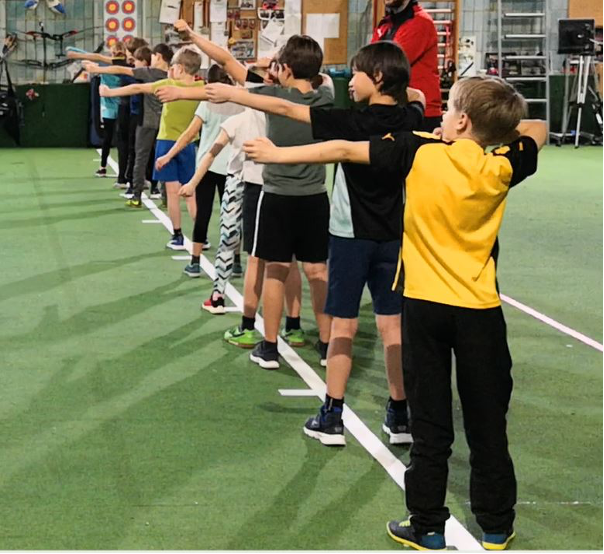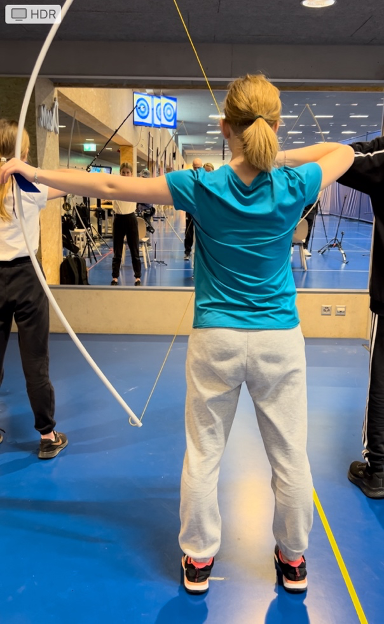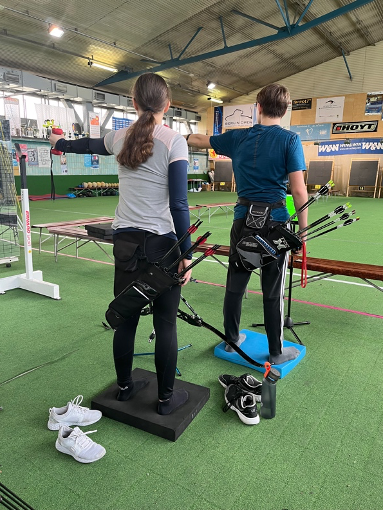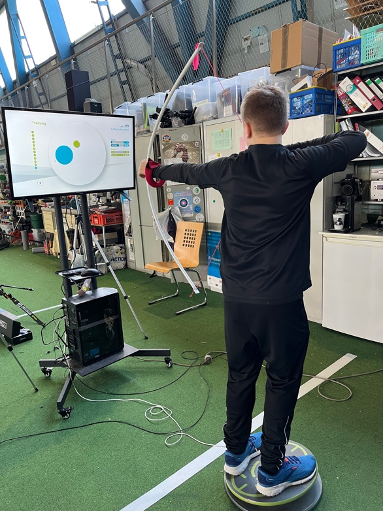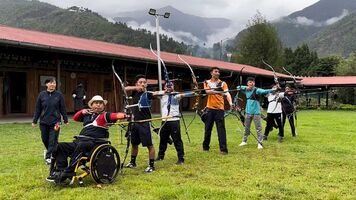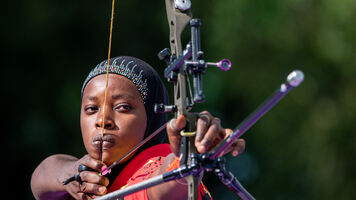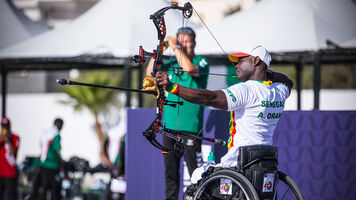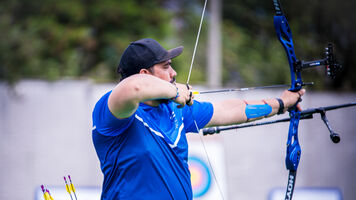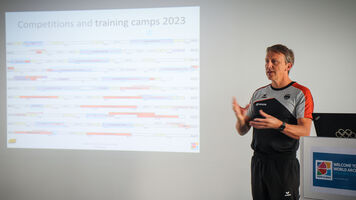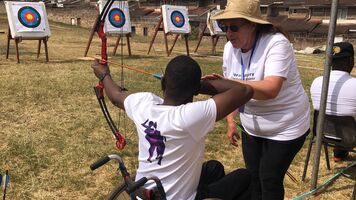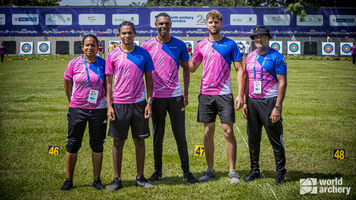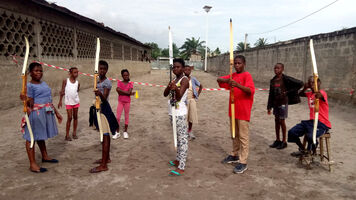How to build a (high) performance programme

Performance programmes are built in many other industries as well as sport all with the same goal in mind.
A sustainable, methodical, planned way of achieving targets and delivering peak performance levels.
In sports such as archery, the importance of these programmes is heightened, and the pressure to build them are soundly intensified due to the several competitions packed within a calendar year and the pressures that come with bringing home medals for your country.
There are variations with every nation using their own individual programme, but all of which are built towards ‘high performance’.

Defining high performance
High performance is what all elite athletes aim to achieve regularly, and it makes sense. Consistently performing at a high level will inevitably lead to steady success. But there is so much that goes towards it.
Most programmes are designed for archers to achieve peak performance by the end of a timeframe, normally at the top end, in time for the biggest competitions, for instance the Olympic Games.
Former France and Germany head coach Marc Dellenbach who currently works at World Archery Excellence Centre in Lausanne, Switzerland, believes high performance is down to three main factors:
- Technique – The ability to master the gestures, postures and movements that constitute the basis of archery.
- Physical – Endurance, core strength and push and pull strength.
- Mental – Concentration, motivation and self-confidence.
These three elements Dellenbach believes are all interdependent on one another and need to be woven together correctly to produce the best outcomes for archers.
“Each of these factors needs to be worked on seriously and regularly to reach excellence,” says Dellenbach. “It is the quality and the rigour in learning and maintaining the work and the training during time that will make the difference.”
Keeping up to date with numerous archers though is no easy feat, which is why all athletes in the Netherlands Olympic Committee have their data under Smartabase – an athlete management system that comes under the expertise of Dutch Olympic Committee sports scientist Emiel Custers.
“All experts, coaches and athletes are connected to this system, and it is capable to connect to many third party wearables and systems via athletic performance indicators,” explains Custers. “All the information gathered in the system form a holistic overview of each athlete to better guide/coach/develop him or her.”
It may look like numbers and graphs, but these online databases are seemingly paramount for programmes nowadays to make sure archers are kept up to the physical and mental fitness required.
Discovering high performance
To make these programmes worthwhile, you of course need the athletes to take part.
Discovering high performance could be argued as a subjective process. Scouting for the next big thing in archery is dependent on the scout, the foundations of the athlete he/she prefers to see at an early stage may be completely different to another.
Dellenbach, for example, sees athletic strength as a key indicator for potential high performance in archery.
“You can evaluate the physical aspects with some tests. For example, you can use dumbbells by starting with 0.5 or 1 kilogram and advice the beginners to keep a straight position and raise the arm 10 times.”
Dellenbach also believes you can uncover high performance potential from seeing beginners do the ‘T position’, first with an elastic band, then a ‘zero bow’ and then with a beginner’s bow as well as organising some games to see how individuals behave technically, physically and mentally in different situations.
These concepts are pre-determined attributes of archery, but Richard Fryer, performance consultant for Australia, believes there is no sufficient evidence for this being the only way to identify archery talent.
“In my opinion, there lacks clear and tested data on what pre determined attributes will lead to high performance (Australia is undertaking research in this area), and therefore, the most relevant approach is to work with what we have to build high performance mindset and training habits and monitor progress against relevant performance benchmarks.”
Another way that can be used to identify high performance, Fryer mentions, is not down to an individual’s athletic capabilities but also the “most interested individuals with access to equipment, facilities and coaching”, with the intention to develop the required attribute to an elite level.

Coaching high performance vs other athletes
After defining what your ‘high performance‘ is, the next step is to coach ‘high performance‘ to the archers.
Most nations will have high performance training centres, producing sessions that will exceed the quality of a regular club, padded with innovative, state-of-the-art technology to record every athlete’s data.
Coaching alone should transcend across the sport with the same intention to develop an archer’s skills using the resources available whether it be in a professional or non-professional setting.
The biggest difference Custers adds however, is the management of relationships within the high-performance centres. Should an athlete not perform as the coach or data first predicted, then, like any job, pressure grows onto the coaches, leading them to tow a hard line if an athlete is not conducting themselves adequately as a professional.
“This means that, with regards of attitude, behaviour, performance (and more), certain resources can be denied to an athlete if certain standards (set by the coach/organisation) are not met,” says Custers. “Simply said, if an athlete does not perform, participation within the high performance setting can be denied.”
“Apart from the personal relationship that coaches have with their athletes, they also need to have a professional relationship towards the athlete and the programme in a whole.”
Dellenbach also agrees that management is a big part of coaching high performance, which involves striking a fine balance between hard work and rest, something he compares to child education.
“When they reach adolescence it’s more complicated, like an archer starting to get results. You have to negotiate more and there may be conflicts. In adulthood, or when the athlete has reached maturity, we’re more into exchange and discussion.”
Does an archer have a competitive ceiling?
The purpose of a performance programme is to help fulfil an archer’s potential and reach peak performance levels by the time an Olympic Games or World Championships comes around.
But can an athlete’s competitive ceiling be broken or does training science truly put a number on it?
Custers seems to think so. He admits that archery is a very trainable sport to the masses, but being one of the three to step foot onto an Olympic podium every four years can only occur to elite-level, capable archers.
“While (recreational/competitive) sports should be inclusive to all people, elite sports are exclusive,” says Custers. “Athletes with a very high ceiling will also prosper in less professional environments (maybe not as high as possible), whereas athletes with a lower ceiling will never reach the absolute top level, no matter what situation/organization they train in.”
Fryer concurs that an archer outdoing their competitive ceiling is “unlikely” and believes an athlete reaching a high performance standard rests on the “broader biopsychosocial context”; a range of factors such as number of siblings, socio-economic status, support from parents and many others.
Dellenbach on the other hand thinks within performance programmes, ceilings can be broken. He agrees with Neuroscientist Samah Karaki’s quote of Talent is a fiction.
Dellenbach instead believes any archer can progress to the top level as long as they abide by the 3 ‘’T’’ rule: Talent, Training, Time.
“They all have talent that is why they are here,” says Dellenbach. “At the end, only the training capacity makes the difference.”

The continual search to build the perfect programme will roll on forever as science and technology advances to try and turn performance theory into fact.
So much thought goes into building these performance programmes and with there now being a vast amount of data behind them, they will predict an archer’s results fairly accurately and will try to improve them on all fronts.
But both science and sport come with anomalies.
There have been and there will continue to be days where top 10 ranked archers will lose to athletes who aren’t even in the top 100 or, an archer will drop a perfect score in wind and rain.
Archery is a sport; nothing is ever certain, and there are countless variables on the day of competition.
Anything can happen on the shooting line.
Whether you agree with Dellenbach in that there are no limits to any athlete, or you concur with Custers and Fryer’s thinking that every archer has a competitive barrier, one thing is for certain.
The preparation high performance programmes offer are vital in ensuring that nations’ archery cream rises to the global top.

